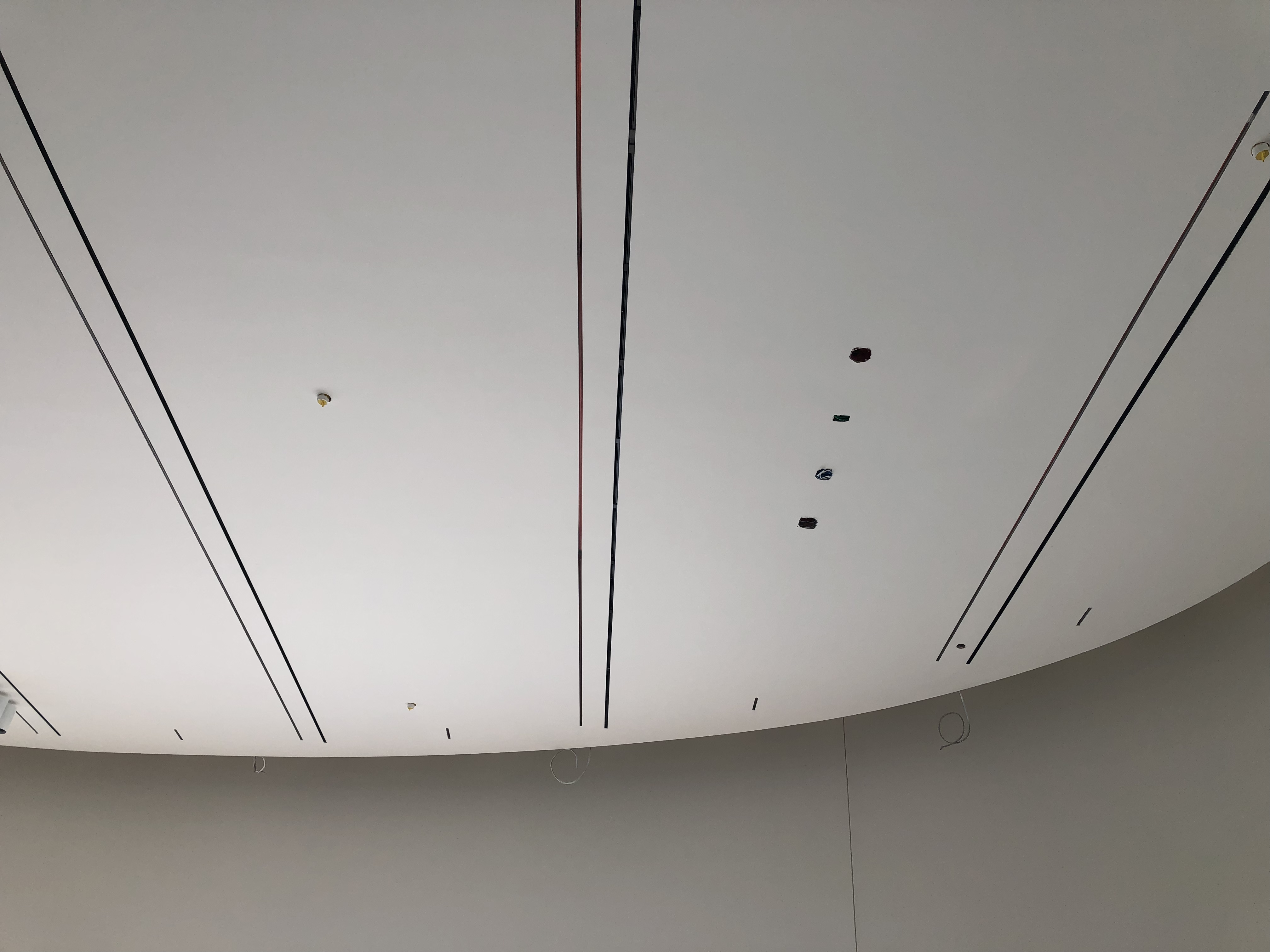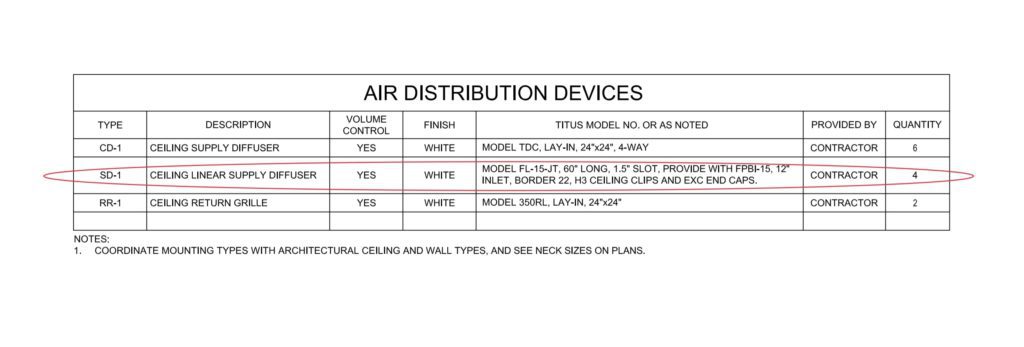About 80% of projects that Conklin’s Plan & Spec Division bids have Linear Slot Diffusers (aka LSD’s) on them to some degree. Next time you’re in a relatively new or renovated Airport Terminal, Convention Center, Office Building or (sometimes) your neighborhood’s new Starbucks there’s a good chance you’ll see, in the ceiling, two or three parallel running straight or curved openings in the ceiling that could be mistaken for simply an architectural design in the hard ceiling. Look closer and you might notice that these openings are actually air vents. The variations of these Linear Slot Diffusers, their style and Slot Widths is plentiful although their purpose and function is the same: delivering air quietly and efficiently through narrow channels.
What are some of the benefits of Linear Slot Diffusers?
Aesthetics: Slots are more aesthetic and look especially better in hard ceilings; you can get them curved to match contours of ceilings, or to mount as a side-wall along a curved wall. But they always work well floated into the sheetrock, making for a clean and unobtrusive appearance. You have a lot of options of margin styles and curvature so that the diffusers become an actual architectural interest, rather than just a climate-control necessity that you try to blend in as much as possible. They can be installed in pretty much any wall or ceiling type, and made to match their curves.
Airflow Control: You can adjust them so the air sweeps across the ceiling to circulate in a room without creating much noticeable airflow, or you can adjust the same diffuser to throw the air out in a jet for maximum air mixing in larger areas. They can be turned to discharge air to wash along the ceiling, or in a concentrated jet of air that can be adjusted to hit specific parts of the room. They’re commonly used along the perimeters of glass high-rise buildings to blow air down the windows to prevent frosting of or condensation on the them. You can also adjust them so the air is thrown out one side or the other of the diffuser.
Noise (or lack thereof): They’re really quiet for the amount of air they move, just as a function of having relatively small amounts of CFMs stretched over a long area to get the ideal air velocities to make them noiseless. The air pressurizes in a plenum behind the diffuser, so there’s a lot of control over the velocity at which the air exist the diffuser, which can really get the noise down. That’s why you’ll see them often used in libraries.
Can Function with the Supply or Return Air: They can function as supply, return, or both! They get air to them by way of plenums that mount to the top of the diffuser, which is then flexed into a supply duct. By alternating supply and return plenums, the same grille can function as it’s own return. This is something that is usually done in places like lobbies of office buildings, or in hotels, where adding in large return grilles might upset the interior design.



